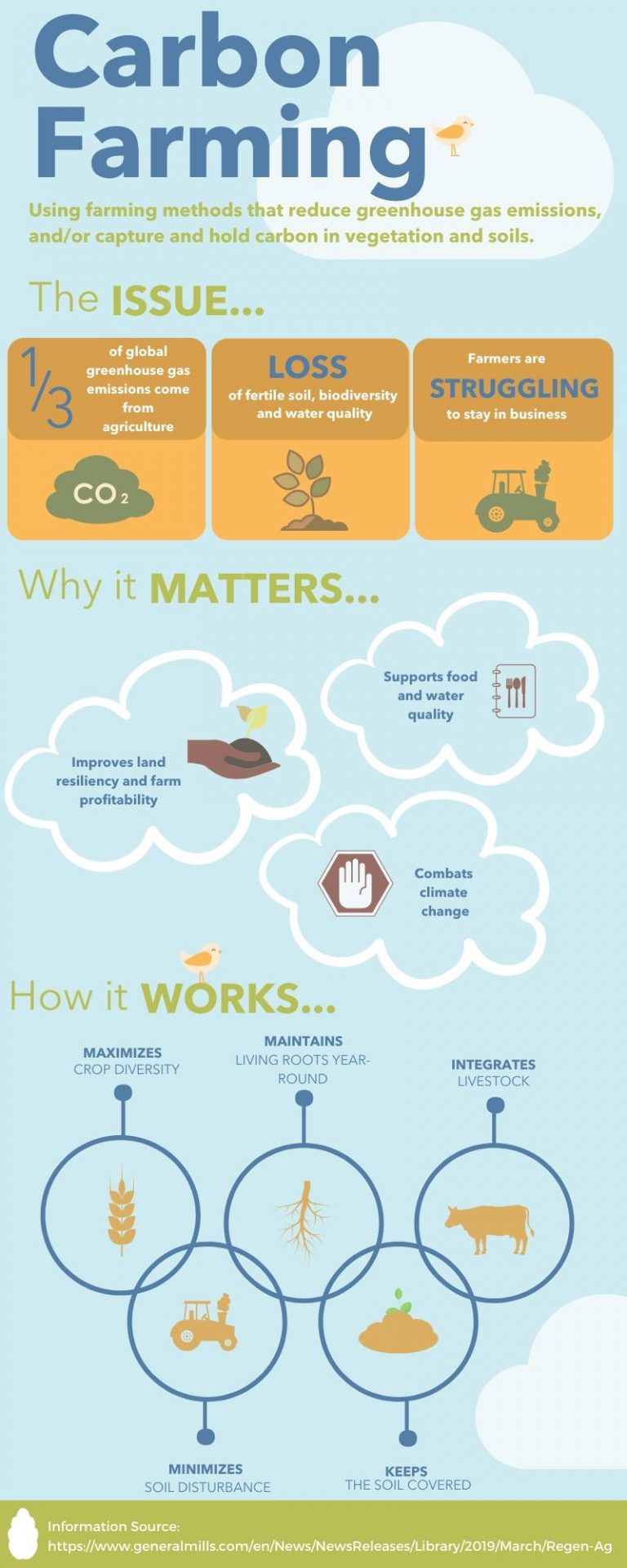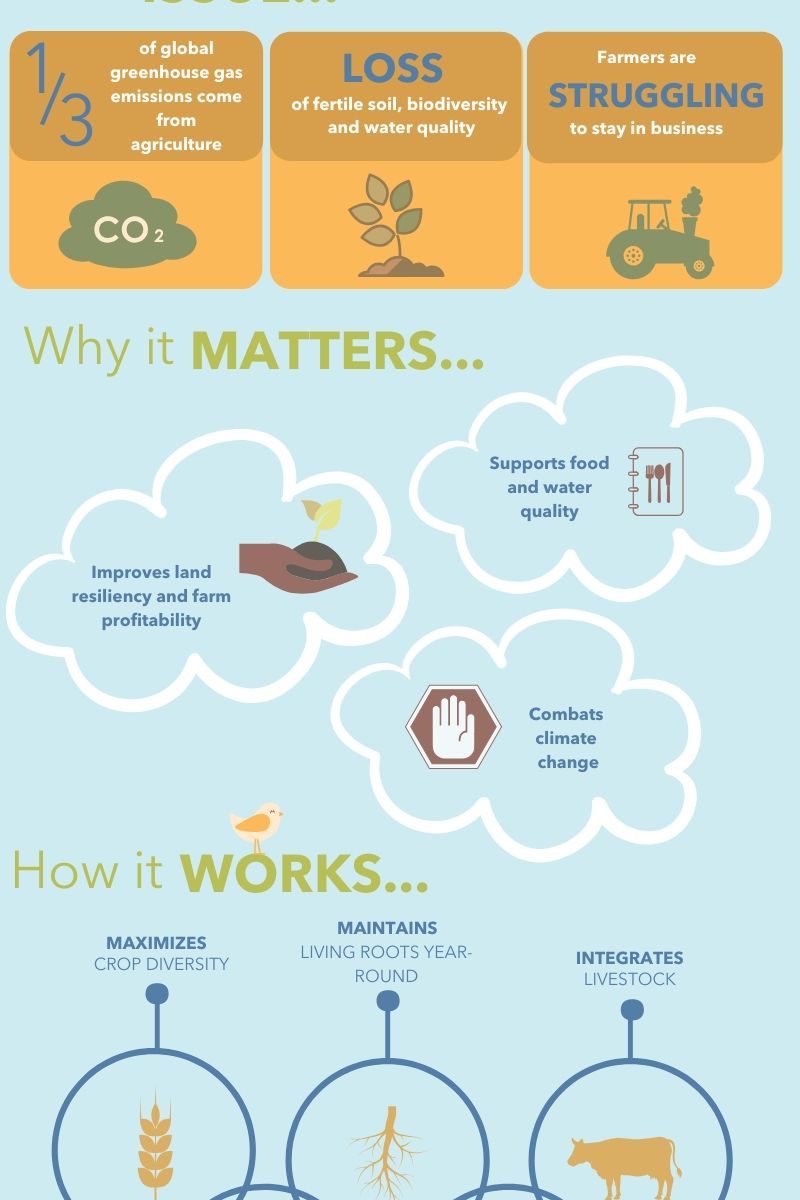
In March 2019, General Mills announced their mission to turn 100 million acres of farmland into regenerative agriculture by 2030. The news release stated that approximately one-third of greenhouse gas emissions and 70 percent of water consumption stems from the global food system. The industry is huge, so any possible steps should be taken to reduce its environmental impact.
Regenerative agriculture, also called “carbon farming,” restores organic matter in the soil, which then holds more water and “pulls” carbon out of the atmosphere. Naturally, soil contains carbon and microbes, which are released into the atmosphere when the ground is tilled. Carbon farming would simply draw the carbon back into the soil. The idea behind carbon farming is that it will help reduce carbon emissions and, therefore, climate change.
How does regenerative agriculture work?
Multiple methods exist that can be defined as carbon farming. Farmers can apply compost to their soil, use managed grazing or plant cover crops, which protect the soil during winter and help prevent erosion. If farmers use these various techniques together, they are more likely to get better results.
Along with General Mills, companies like Danone, Kellogg, and Nestlé are also working toward more sustainable farming. The One Planet Business for Biodiversity (OP2B) aims to “scale up regenerative agricultural practices, boost cultivated biodiversity and eliminate deforestation.” All of these efforts are in response to climate change and the request for big companies to participate in combating it.
However, the question remains. How long does the carbon remain in the soil? And how much carbon can the soil hold?
The reason soil-based carbon is released in the first place is due to tilling and other farming operations. Re-capturing the carbon would only temporarily solve the problem, especially if farmers have to rely on tilling to continue their farming. So, if regenerative agriculture were to bring in tactics that could forever eliminate tilling, then carbon farming would hold some merit.
In terms of storage, the soil cannot hold an infinite amount of carbon, nor can one area absorb all of it. Multiple regions of the United States, and the world for that matter, will have to resort to carbon farming to begin making a dent in the atmosphere’s carbon content.
Another issue, regarding a company’s marketing, is “greenwashing.” This is when companies, specifically large corporations, promote their eco-friendly practices and ideals while not having the evidence to support it. Essentially, it is creating a good image and garnering consumers without having any truth to their claims or actions.
The popular thing for businesses, institutions and other corporations these days is to be sustainable and environmentally conscious. For food companies, this is incredibly important as their product comes from the earth itself. However, growing the food is not the only detrimental influence on climate change.
In an article for NBC News, Gosia Wozniacka wrote, “Regardless of how it’s done, most experts agree that regenerative farming won’t make up for the other carbon costs associated with producing, shipping and packaging massive quantities of food.”
General Mills is responsible for popular cereal brands Cheerios, Cinnamon Toast Crunch and Chex. Each box of cereal is packaged with a cardboard box and plastic bag. The cardboard box is easily recyclable in most places, but many areas (including some neighborhoods of St. Paul) do not recycle the plastic bags. These, along with other materials from the shipping and packaging process, contribute to the overall climate problem.
Despite this, small solutions may be the best approach to fighting climate change. The problem won’t be solved in a day. Strategies like carbon farming help push eco-friendly practices forward. Even if it is not majorly effective, it is still an important step forward to show that large corporations can make small changes that amount to big progress.
Maddie Peters can be reached at pete9542@stthomas.edu.

